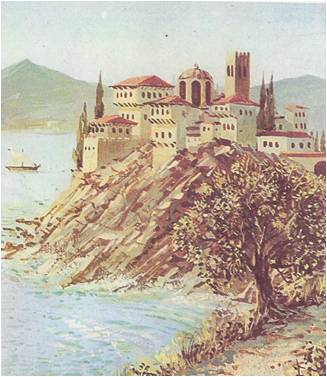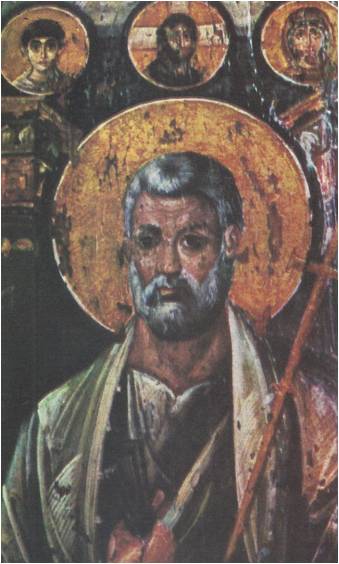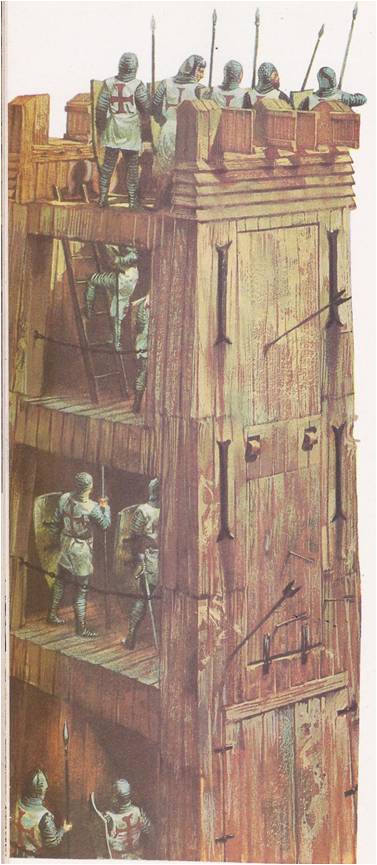CHRISTIANITY, as the official religion of Byzantium‚ was under the control of the government. The emperor was the head of both church and state and high church officials in the East recognized him as the religious leader of the land. One of them wrote, “Nothing should happen in the Church against the command or will of the Emperor.”
The church organization was similar to that of the state. As its head, but under the emperor, was the patriarch of Constantinople, who was appointed by the emperor. The appointment had to be approved by high church officials, but actually they never went against the emperor’s wishes. The emperor also had power to remove the patriarch from office. Under the patriarch were the metropolitans and archbishops, who had charge of large cities and important centers in the provinces. Then came the bishops and their staffs, which included the local priests. Unlike the priests of the West, those of the East were usually married. All the high-ranking officials of the church were unmarried and came from monasteries — places where monks and other religious men lived by themselves and spent their lives in prayer and service to God.
MONASTERIES AND CONVENTS
There were a great many monasteries in the East and many similar places for women, called convents. Many of these institutions helped the poor. Some provided hospitals, while others ran schools where the children of the poor could be educated. In time there came to be so many monasteries that they created problems for the empire. Many people went to live in them to escape from the army, or from the burden of public office. Monasteries became very wealthy, holding great tracts of land. Since they were usually not subject to taxes, the empire lost a large portion of its land-tax money because of them. The rich monasteries had so much political power that emperors usually did not like to make laws unfavorable to them.

On the other hand, the monasteries served the empire well in aiding the church and state carry out important missionary work in neighboring lands. This tremendous project was the work of many centuries. Churches and monasteries were built in pagan lands. An alphabet was invented for the Goths and the Bible translated into their language. Portions of the Bible were also translated into Armenian and the languages of the Huns and the Moravians. Unlike the Catholic Church in Rome, which used Latin in all its churches everywhere, the Byzantines believed more people could be converted to Christianity if the Bible and rituals of the church were presented to them in their native languages. Within the empire itself, monasteries served to stress the importance of religion. This strengthened the church and helped to make Christianity the religion of all the people
THE ECUMENICAL COUNCILS
The emperor did not often interfere in affairs of the church. When differences arose concerning Christian teachings, the emperor had the power to place the matter before a council of bishops from all the churches. These councils were described as “ecumenical,” meaning world-wide, or universal. The Bible and its interpretation as expressed by the ecumenical councils formed the basis of Byzantine Christianity, or the “Orthodox” faith. Beyond the borders of the empire it came to be known as the “Greek Orthodox” faith.
One of the Orthodox Church’s greatest problems was its relations with Rome. Great jealousy existed between the old and the new capital. They clashed over a number of technical point regarding the true Christian faith. Such arguments were usually brought before ecumenical councils, where both sides could be heard. Once the council had decided upon the correct Christian position, the emperor seemed to consider it his duty to persecute the heretics — those who were teaching something other than the true faith.
While the church in Rome did send bishops to the ecumenical councils called by the emperor, it always maintained a certain amount of independence. Bishop Ambrose of the Roman church once declared, “The Emperor is within the Church, not over it.” In 390, when Emperor Theodosius caused the massacre of a number of people in Thessalonica to punish them for the murder of their governor, Ambrose forced the emperor to show sorrow for his sin in public.
THE CONTROVERSY SPREADS
After the fall of Rome, the Patriarch John the Faster took the title “Ecumenical” for himself. This angered Pope Gregory, who declared that no church could have authority over another since all were equal before God, but later popes rejected this view. They took the position that, as the head of Peter’s church in Rome, they were the true religious leaders of the world and therefore the best judges of what was right. Constantinople still held that questions of faith could be settled only by an ecumenical council.

In the eighth century, Emperor Leo III, called the Isaurian because he came from the province of Isauria in Asia Minor, placed a ban on religious pictures. Such pictures were known as icons. Leo III was opposed to them because he felt that many people worshiped the images in the pictures. His movement against religious pictures was called Iconoclasm and it led to a break between the West and the emperor, for Rome was in favor of religious pictures and saw no harm in them. From that time on, Rome never again followed the ancient practice of asking permission of the emperor before electing a new pope.
When Italy was invaded by the Lombards, Rome did not ask the empire for help. It turned instead to the Franks, a Germanic people, who success defended Rome. Then, out of territory belonging to the empire, Rome and the Franks set up an independent state. The pope crowned Charlemagne, a Frank, as the king of that state on December 25, 800. When the people of Constantinople heard that a new kingdom had been carved out of the empire and that the pope had actually crowned a Frank as its king, they were shocked. They felt that the pope had turned against them. He was guilty of an act of treachery and could no longer be trusted.
The churches of the East and the West soon showed how bitterly they felt toward each other. Pope Nicholas refused to give Photius, the newly elected patriarch of Constantinople, the usual letter of endorsement. Both religious leaders then exchanged insults by excommunicating each other — removing each other from membership in the church.
THE FINAL BREAK
Rome made a final break with the Orthodox Church when it added the Latin work Filioque, meaning “and from the Son,” to the Apostles’ Creed, which is the official summary of the Christian faith. The word was added to express the belief that the Holy Spirit came from the Father and from the Son. Rome claimed that the addition did not change the meaning, since the word was already suggested in the Apostles’ Creed itself. To Constantinople, any tampering with the creed, which had been so carefully written by an ecumenical council, was an unpardonable sin. The church in Constantinople therefore held that Rome was guilty of heresy.

One incident after another drove the churches of the East and the West further apart. After the East had converted the Slavic peoples of Croatia, Rome won them over to the Catholic Church. Rome also tried to win over the Bulgarians whom the East had also converted. The attempt failed and the Bulgarians continued in the Orthodox faith.
The Crusades, in which Christian armies from Europe tried to recover the Holy Land from the Arabs, added to the misunderstandings between East and West. The people of the East feared the crusaders, believing that the armies had really come to capture the Byzantine Empire for the West. The people of the West were bitter because they felt that the empire should have joined forces with the crusaders and helped them retake the Holy Land. Instead of helping the Crusades, the empire seemed to be standing in their way.
Then came the Fourth Crusade, which marched against Constantinople, captured it and took all its treasures. When Pope Innocent III heard of it he was stunned, but he quickly took advantage of the victory by placing Latin religious leaders over the churches of the East. The Byzantines were now convinced that they had been right in suspecting the crusaders all along and they believed that the pope had planned the attack on Constantinople to gain control of the Orthodox church.
After the empire had retaken Constantinople several emperors tried to unite the churches of the East and the West. They all failed; the bitterness of the Byzantines toward Rome was too great for even an emperor to overcome. Thus the churches of the East and the West were deeply divided before the empire fell to the Turks.





